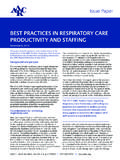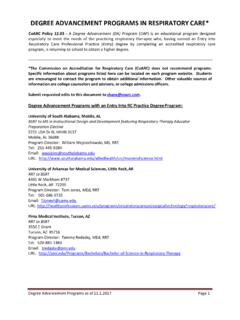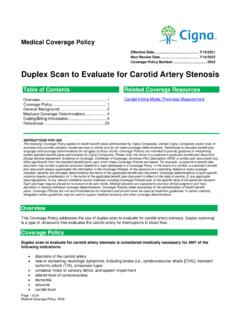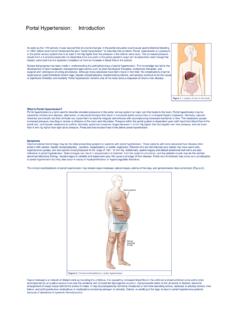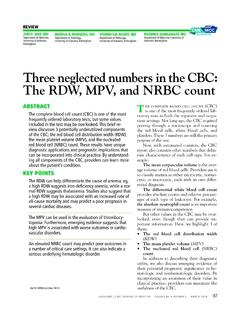Transcription of Respiratory Care Scope of Practice - AARC
1 Position Statement9425 N. MacArthur Blvd., Ste 100, Irving TX 75063 T W 2013, American Association for Respiratory care , Irving, TexasThe Practice of a Respiratory therapist is directed by a licensed independent practitioner and is determined by state licensure laws where applicable. The Practice typically focuses on: Patients across the age spectrum neonatal through geriatric. Direct and indirect patient observation and monitoring of signs, symptoms, reactions, general behavior and general physical response to Respiratory care and diagnostic interventions. Implementation of Respiratory therapy procedures, medical technology, and diagnostic procedures necessary for disease prevention, treatment management, and pulmonary rehabilitation.
2 Utilization of protocols, guidelines, pathways, and policies driven by evidence-based medicine, expert opinion, and standards of Practice . Participation in research to evaluate interventions and technology to determine their ability to improve patient outcomes. Facilitation and direction of patient rehabilitation programs and the development of disease and care management plans. Provision of patient and family education activities to promote knowledge and understanding of the disease process, medical therapy and resources available to assist in the care of the patient. Facilitation of health care student learning. Support of public education activities focused on the promotion of cardiopulmonary wellness and prevention that is sustainable.
3 The responsibilities of a Respiratory therapist include, but are not limited to: 1. Performance and collection of diagnostic information a. Pulmonary function testingb. Interventional diagnosticsc. Sleep studiesd. Noninvasive and invasive diagnostic procedurese. Blood gas and other pertinent laboratory analysis Respiratory care Scope of Practice Respiratory Therapists are health care professionals responsible for the care of patients with deficiencies and abnormalities of the cardiopulmonary system. The Scope of Practice crosses all patient, client and resident populations and care sites including, but not limited to various in-patient and outpatient settings ( acute care , urgent care , long-term care , sub-acute care , skilled nursing facilities), physician s offices, sleep labs and clinics, vendor and industry venues, and the patient s N.
4 MacArthur Blvd., Ste 100, Irving TX 75063 T W 2013, American Association for Respiratory care , Irving, Texas2. Patient assessment a. Physical examinationb. Diagnostic data interpretation 3. Application of therapeutics to Respiratory care a. Medical gas therapyb. Humidity therapyc. Aerosol therapyd. Artificial airway insertion, management, and caree. Airway clearancef. invasive and non- invasive mechanical ventilationg. Vascular catheter insertion, management, and careh. Extracorporeal Life Support (ECLS) 4. Assessment of therapies 5. Disease management of acute and chronic diseases 6. Collaborative support of hemodynamics 7. Discharge planning and case management 8. Provision of emergency, acute, critical and post-acute care , including a.
5 Patient and environmental assessmentb. Therapeutic interventionsc. Patient land and air transport Effective 8/87 Revised 12/07, 12/10, 07/13 Last Revised 11/18

